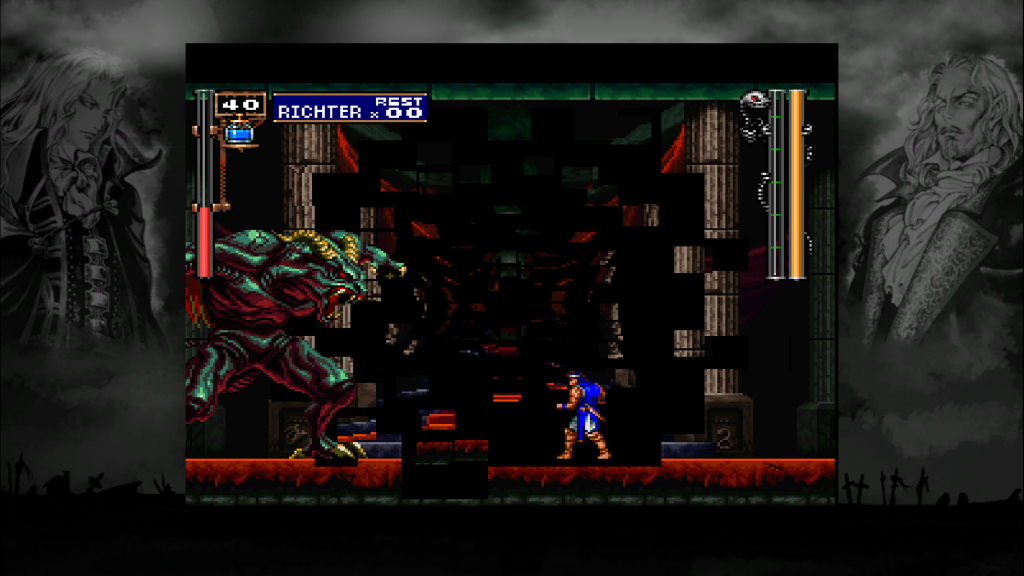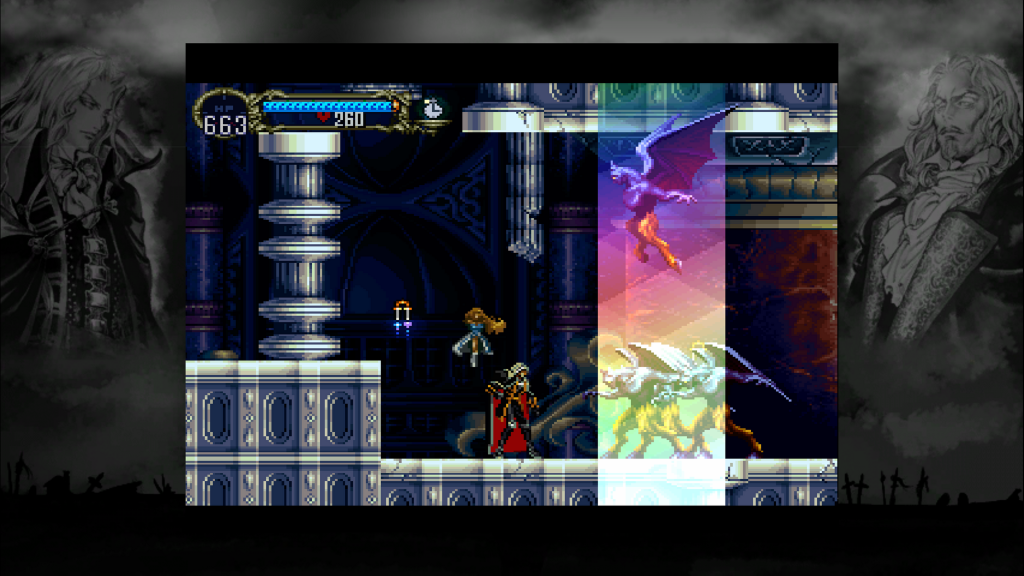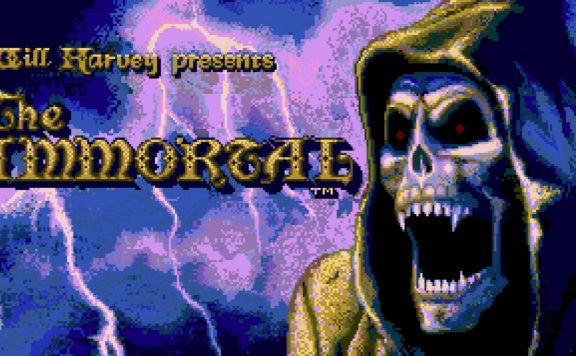This review is based upon the Xbox 360 version of Castlevania: Symphony of the Night.
Castlevania: Symphony of the Night is a wonderfully macabre and exhilarating adventure game developed by Konami and originally released in 1997 on the PlayStation. Considered by many to be one of the best games ever made, Castlevania: Symphony of the Night took the existing Castlevania franchise and propelled into higher popularity than ever before. Playing as the suave and mysterious protagonist Alucard, you’ll explore the many rooms and areas of Dracula’s castle, aiming to destroy the unholy dwelling once and for all. In almost every way, Castlevania: Symphony of the Night takes the popular and enjoyable elements from past Castlevania titles and refines them to near-perfection, offering exciting combat, satisfying exploration, and an intriguing atmosphere. Once you take your first steps into Dracula’s castle and start defeating enemies, there’s no question as to why this is considered one of the best 2D action games of all time.
The Lore of Castlevania: Symphony of the Night
Symphony of the Night’s story takes place four years after the events of the previous game, Castlevania: Rondo of Blood. At the start of Symphony of the Night, players get to experience the ending sequence from Rondo of Blood, with the vampire-hunter Richter Belmont facing down Dracula in an intense duel to the death. Jumping forward four years, Richter has disappeared and Dracula’s castle has returned, looming in the sky as a beacon of evil. With no member of the Belmont clan left to investigate, Dracula’s half-vampire, half-human son Alucard sets out to settle the score.

Although Alucard made a brief appearance in Castlevania III: Dracula’s Curse, Symphony of the Night gives players their first deep dive into the tormented mind of the half-vampire. Despite his familial connections to the infinitely evil Dracula, Alucard’s human side gives him a slightly more diplomatic approach to the plight of humanity. Urged on by the dying wish of his mother, Lisa, Alucard’s ultimate goal is to defeat Dracula and end his reign of terror on the living. In order to protect humanity, Alucard must delve deep into the dangerous depths of Dracula’s castle and solve the mystery behind Richter’s disappearance. Along the way, he’ll have to contend with monstrous creatures, intimidating bosses, and his own lineage.
Alucard’s Adventure
While the core gameplay in Castlevania: Symphony of the Night is similar to other classic Castlevania games, there’s a lot about this entry in the series that makes it stand out from the rest. In classic Castlevania fashion, you must progress through the perilous halls of Dracula’s castle, defeating enemies and avoiding obstacles along the way. However, instead of the iconic whip weapon that most Castlevania protagonists wield, Alucard is able to fight with a wide variety of weapons, including daggers, swords, spears, and more. You can also find handy sub-weapons that help you take down the opposition, or utilize one of the eight mystical spells that Alucard can learn and cast. For the most part, Symphony of the Night offers classic sidescrolling gameplay and combat, but it makes some big changes in terms of progression and exploration.

The most notable elements of Symphony of the Night are the infusion of role-playing mechanics into combat, as well as the non-linear progression design of the castle itself. When it comes to combat, players can earn experience points by defeating enemies, raising Alcuard’s power level along with their health and magic meters. Alucard also possesses four stats, including strength, defense, intelligence, and luck. Increasing these stats is key to surviving, as the enemies within Dracula’s castle can be exceptionally challenging.
Unlike other 8-bit Castlevania games, Symphony of the Night plays out in a non-linear fashion, encouraging players to explore every inch of the castle. As you explore, paths will often be inaccessible or blocked, requiring you to find a new power-up or ability in order to progress. For example, Alucard possesses a shape-shifting ability that allows him to change into new forms, helping him to reach high ledges or other distant platforms. This results in a gameplay loop that involves searching the castle and locating new items, allowing for further exploration and better gear. This style of gameplay progression was so influential that, in combination with the classic Nintendo franchise Metroid, inspired an entirely new sub-genre of game known as the “Metroidvania”.






Pingback: Episode 06: Sonic Prime, Castlevania Fan Translation And A New Game Boy Game - Retro Ages